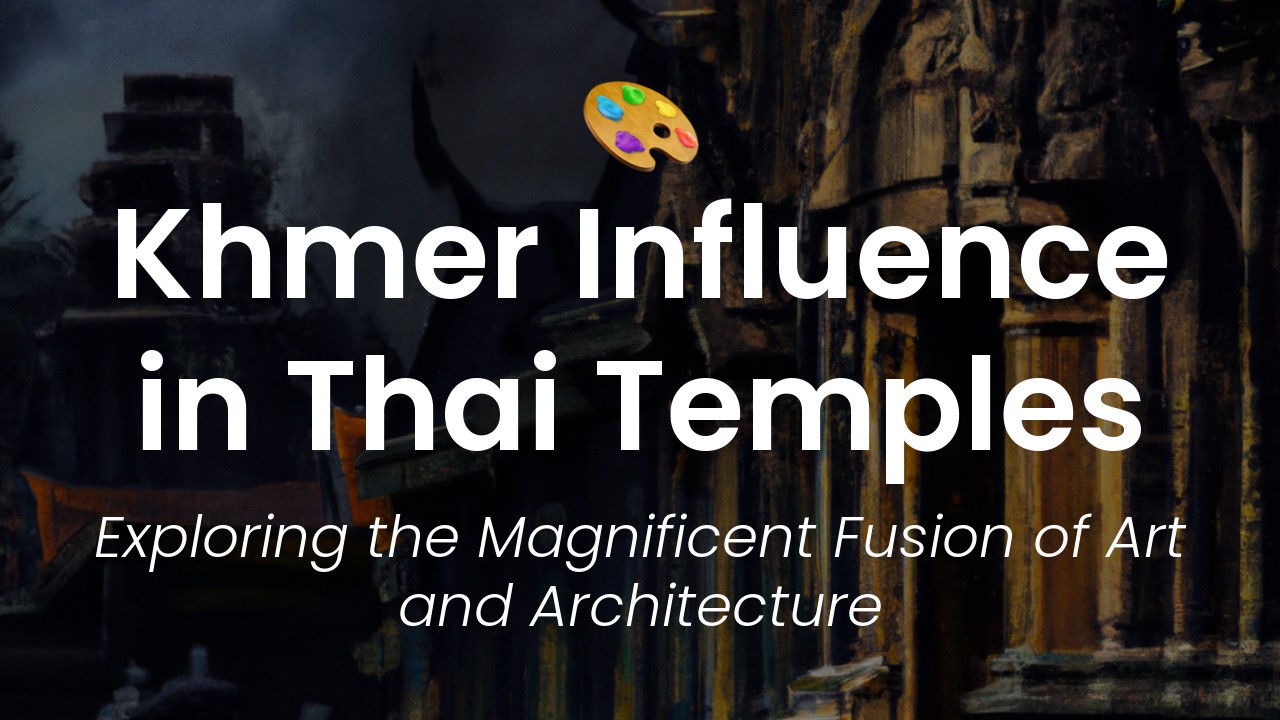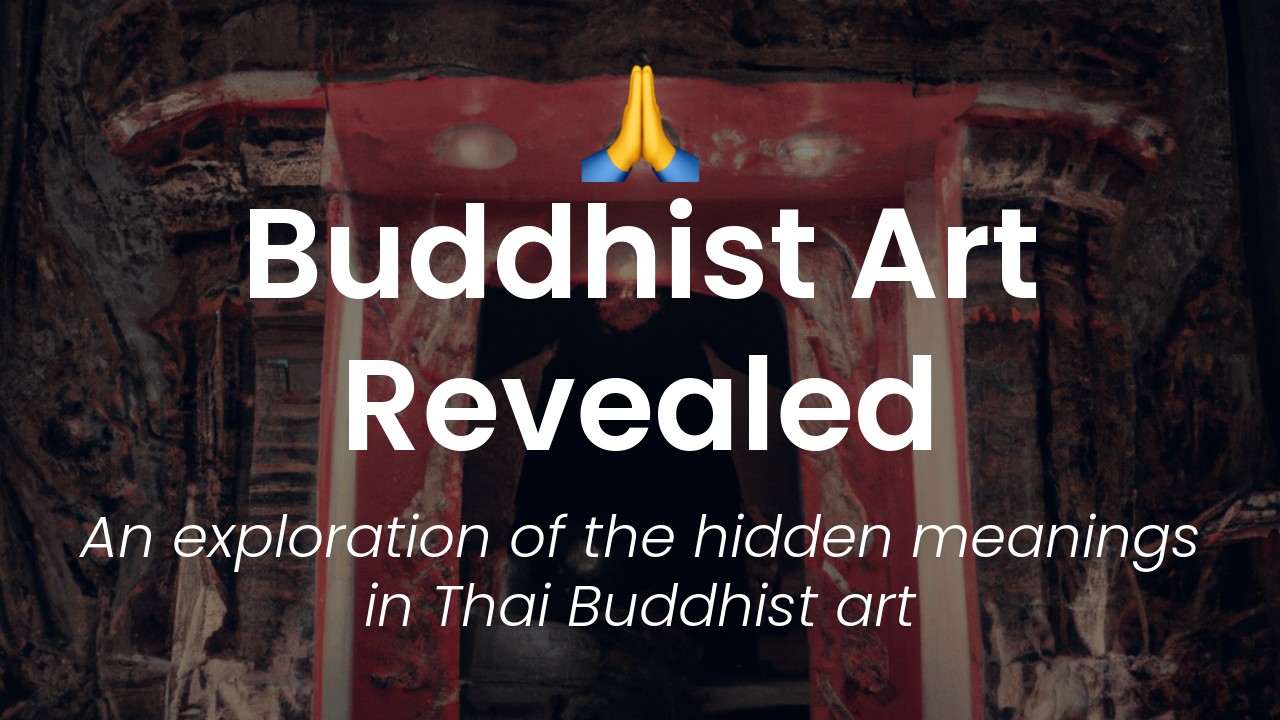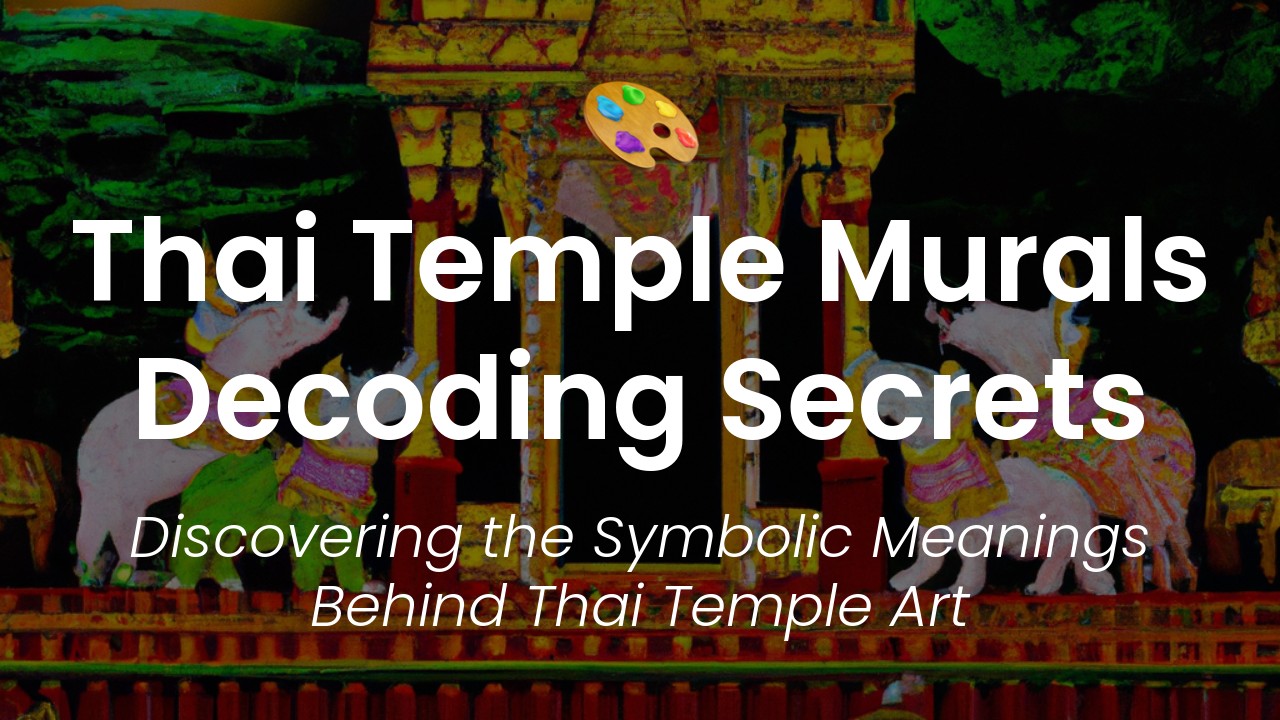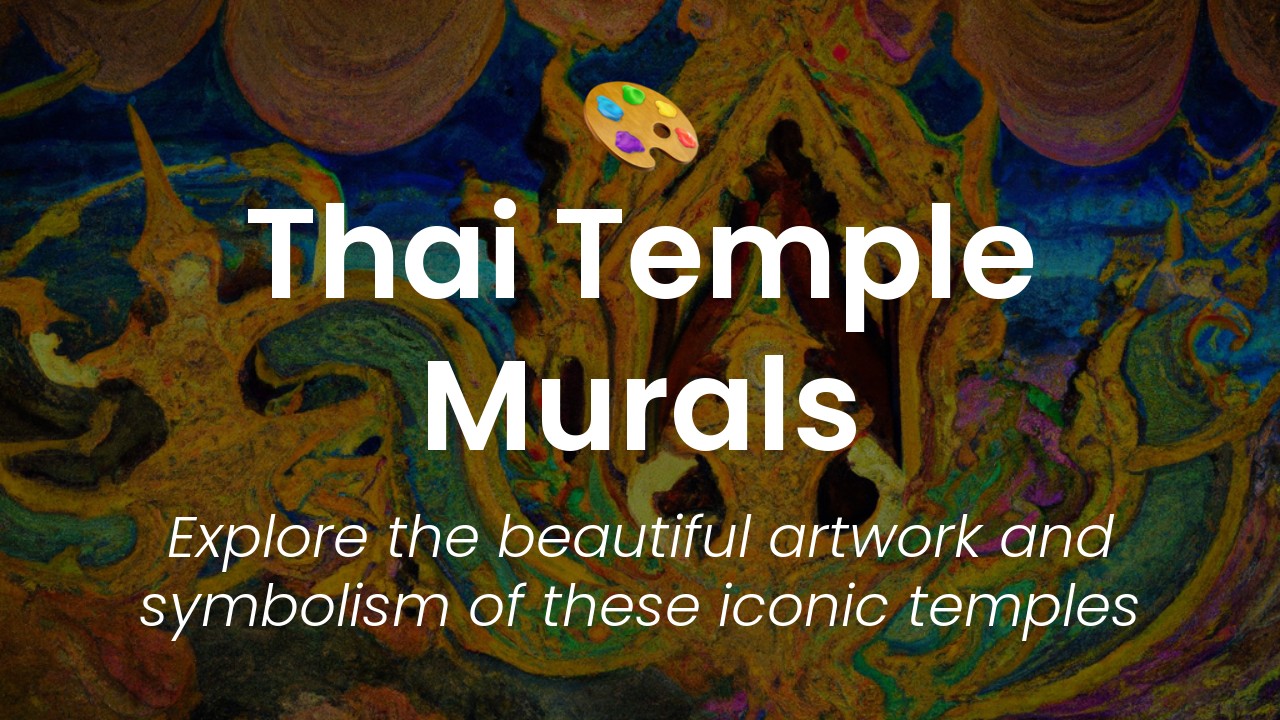Hey everyone, it's Sirinya here! Today, I'm excited to share with you about one of my favorite topics – the influence of Khmer art on Thai temples. Thailand is home to a wide array of temples, each with its distinct features and artistic influences. One of the most prominent and awe-inspiring is undoubtedly the Khmer-influenced temples.
Khmer art is a type of art that originated in Cambodia and is characterized by its intricacy, attention to detail, and symbolic meaning. Over the centuries, it spread throughout Southeast Asia, and its influence can be seen in various aspects of Thai art and architecture. Some of the most notable Khmer-influenced temples in Thailand include Wat Phra Si Sanphet in Ayutthaya, Wat Arun in Bangkok, and the majestic Phanom Rung Historical Park in Buriram.
In this blog post, we'll dive deeper into the history of Khmer art and its impact on Thai temples. We'll explore the different types of Khmer-influenced architecture and design that you can find in Thailand, from the intricate carvings to the towering spires that make these temples so breathtaking. Additionally, we'll discuss the significance of each element of Khmer art and how it contributes to the overall beauty and meaning of the temple. So, sit back and get ready to be amazed by the beauty of these Khmer-influenced Thai temples!
The Khmer Empire and its Art
The Khmer Empire was one of the most powerful kingdoms in Southeast Asia, flourishing from the 9th to the 15th century. Its capital was located in Angkor, which is now part of Cambodia. The Khmer Empire left behind a rich cultural heritage, including its distinctive style of architecture and art.
Khmer art is renowned for its intricate carvings and elaborate decorations. It draws inspiration from Hinduism and Buddhism, reflecting the religious and cultural beliefs of the Khmer people. Some of the most famous examples of Khmer art are the temples of Angkor, including Angkor Wat, which is regarded as one of the most iconic landmarks in the region.
Arrival of Khmer Art in Thailand
The influence of Khmer art can be seen not just in Cambodia but also in neighboring countries like Thailand. The Khmer Empire was a dominant force in Southeast Asia, and its culture and art spread far and wide.
The arrival of Khmer art in Thailand dates back to the reign of King Ramkhamhaeng the Great of the Sukhothai Kingdom, who ruled from 1279 to 1298. During his reign, he established trade relations with Angkor and other Khmer cities. This led to the exchange of not just goods but also culture and ideas, including Khmer art.
Features of Khmer Art in Thai Temples
The influence of Khmer art on Thai temples is evident in the elaborate carvings and decorations that adorn their walls and roofs. One of the most notable features of Khmer art is the use of apsara, celestial nymphs that are said to inhabit the heavens. Apsara are typically depicted dancing and playing musical instruments, and they are often used to adorn the walls of Khmer-influenced temples in Thailand.
Another hallmark of Khmer art is the use of intricate detailing and motifs, such as lotus flowers, nagas (serpents), and garudas (bird-like creatures). These elements are often incorporated into the architecture of Thai temples, adding a unique and distinctive touch.
Comparison with Thai Artistic Styles
While Khmer art has undoubtedly left its mark on Thai temples, it's worth noting that Thai art has its own distinct style. Thai art draws inspiration from a variety of sources, including Hinduism, Buddhism, and indigenous beliefs. It is characterized by its vibrant colors, graceful lines, and intricate patterns.
One of the most recognizable examples of Thai art is the chofah, a decorative element that adorns the roofs of Thai temples and palaces. Chofah are often depicted as bird-like creatures with a curved or spiral-shaped tail, and they are said to symbolize protection and prosperity.
Exquisite Examples of Khmer-influenced Temples
Some of the most exquisite examples of Khmer-influenced temples in Thailand can be found in the northeastern province of Nakhon Ratchasima. One of the most impressive is the Prasat Hin Phimai, which dates back to the 11th century. It is said to be one of the best-preserved Khmer temples outside Cambodia, and it features intricate carvings of apsara and other celestial beings.
Another impressive temple is the Phanom Rung Historical Park, which dates back to the 10th century. It is perched atop a hill and offers stunning views of the surrounding countryside. The temple complex is renowned for its intricate carvings and decorations, including elaborate bas-reliefs.
Importance of Khmer Art in Thai Culture
The influence of Khmer art on Thai temples is not just an aesthetic choice – it's also a reflection of the shared cultural heritage between the two countries. The exchange of culture and ideas that occurred centuries ago has left a lasting legacy that is still visible today.
By preserving and showcasing Khmer-influenced temples, Thailand is not only highlighting its rich cultural heritage but also demonstrating the importance of cultural exchange and cooperation between neighboring countries.
Conclusion: Khmer Art Continues to Inspire Thai Temples
The influence of Khmer art on Thai temples is a testament to the enduring legacy of the Khmer Empire and its cultural heritage. From the intricate carvings of apsara to the elaborate decorations of lotus flowers and garudas, Khmer art has left its distinctive mark on Thai temples. And while Thai art is also characterized by its unique style and motifs, the influence of Khmer art is a reminder of the shared cultural heritage of Southeast Asia.





